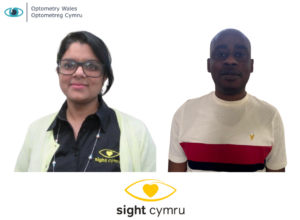
Event date: 20th January (6:30pm)
Title: Ethnicity and Eye Care in Wales
Speakers: Bablin Molik, Chief Executive Officer of Sight Cymru and Tosin Adeleke, Awareness Campaign Officer at Sight Cymru
Open to: Optometrists, Dispensing Opticians, all Practice Team
CPD: 1 General Interactive Point for Optometrists and Dispensing Opticians.
You must remain in attendance online for the full webinar duration including the Q & A session to qualify for the CPD point.
Register here Please register using this official registration form.
Forwarded links will not collect your details and CPD certificates cannot be issued without a completed registration.
Domain/Learning Outcomes:
Communication SoP1
By the end of the session attendees should be able to:
– give patient information about the prevalence and risk factors of eye conditions in certain ethnic minority populations in a way they can understand, using your professional judgement to adapt your language and communication as appropriate
– understand patient perceptions around eye care services and ways to encourage uptake of primary eye care services amongst ethnic minority populations.
Clinical practice SoP 5
By the end of the session, attendees should be able to understand the eye conditions known to have a higher prevalence in certain ethnic minority populations, along with the factors that increase the likelihood of eye disease.